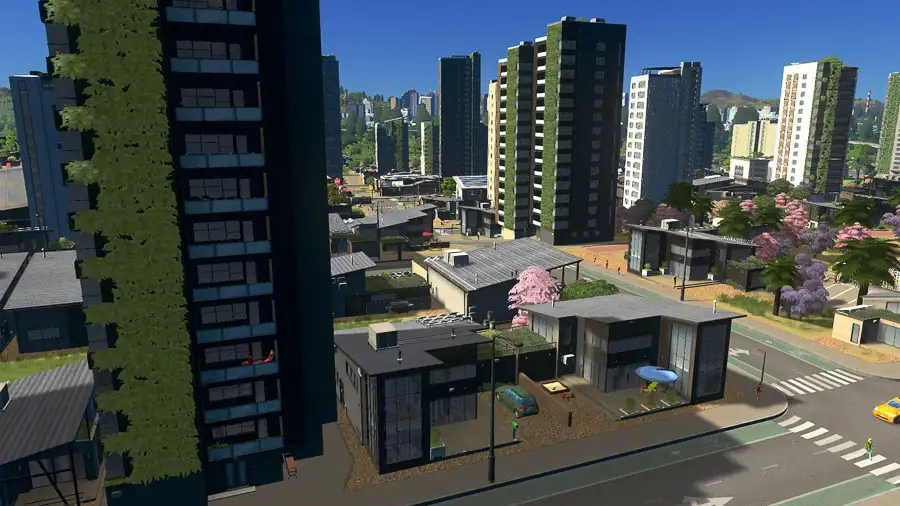
In Cities: Skylines, land value is one of the factors that let buildings upgrade to their highest levels. Without high enough value, the city won’t be able to earn the big bucks that come from residential taxes. At worst, buildings won’t spawn at all in an undesirable place.
If you’ve zoned a new residential area and it’s just sitting there empty, a little nudge in the form of a few parks can often kick things off. By raising value a bit, people will be more likely to move into the city.
On the other hand, if land value drops suddenly, buildings might find themselves overleveled. If that isn’t fixed quick enough, people will move out, leaving abandoned buildings in their wake. There’s a lot of factors that go into land value, and here I’ll list them all out. Let me know if I’ve missed anything!
Note on compatibility: this guide is about the unmodded, vanilla game. I’ve got all expansions (up to Industries) installed, but most of this relates to the core game across PC, Mac, Linux, Xbox, PS4 and Switch.
Upgraded buildings
When buildings level up, they themselves increase the value of the land around them. That means that a single park in one part of a district can trigger a snowball effect. Each building’s addition to land value is enough for the next to level up and so on. That means you can often do less than you think to nudge things up.
Waterfront zoning
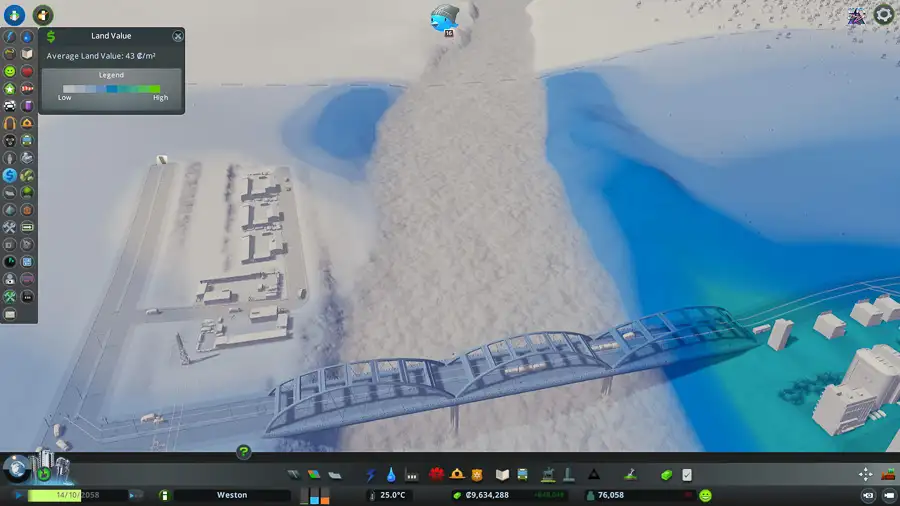
Open the land value overlay and you’ll notice that land along the coast, by the edge of the river or around a lake is highlighted blue. Areas next to water, in other words, get a land value head start.
Zoning residential next to the water makes it easier to level up, especially early on when you haven’t got the cash for big investments in parks and leisure.
Canals work the same way, so it’s possible to create high-value neighbourhoods by bringing water into the city. Add some ferries for local transport and you’ve got a great canalside town.
Parks and Rec
The easiest way to improve land value is usually to drop a few local parks. These vary widely in cost and upkeep which means some are better value than others. For example, the basic Small Playground costs x a week while the Plaza costs an inexplicable x/week.
Personally, I use the tennis and basketball courts and the skatepark in practically every neighbourhood I build. They’re a decent balance of size, aesthetics, range and cost. Later on, when the city is sat on millions in the bank, it doesn’t really matter. But in the early to mid game, park choice is more important than you’d think.
City services: schools, clinics, police and fire stations
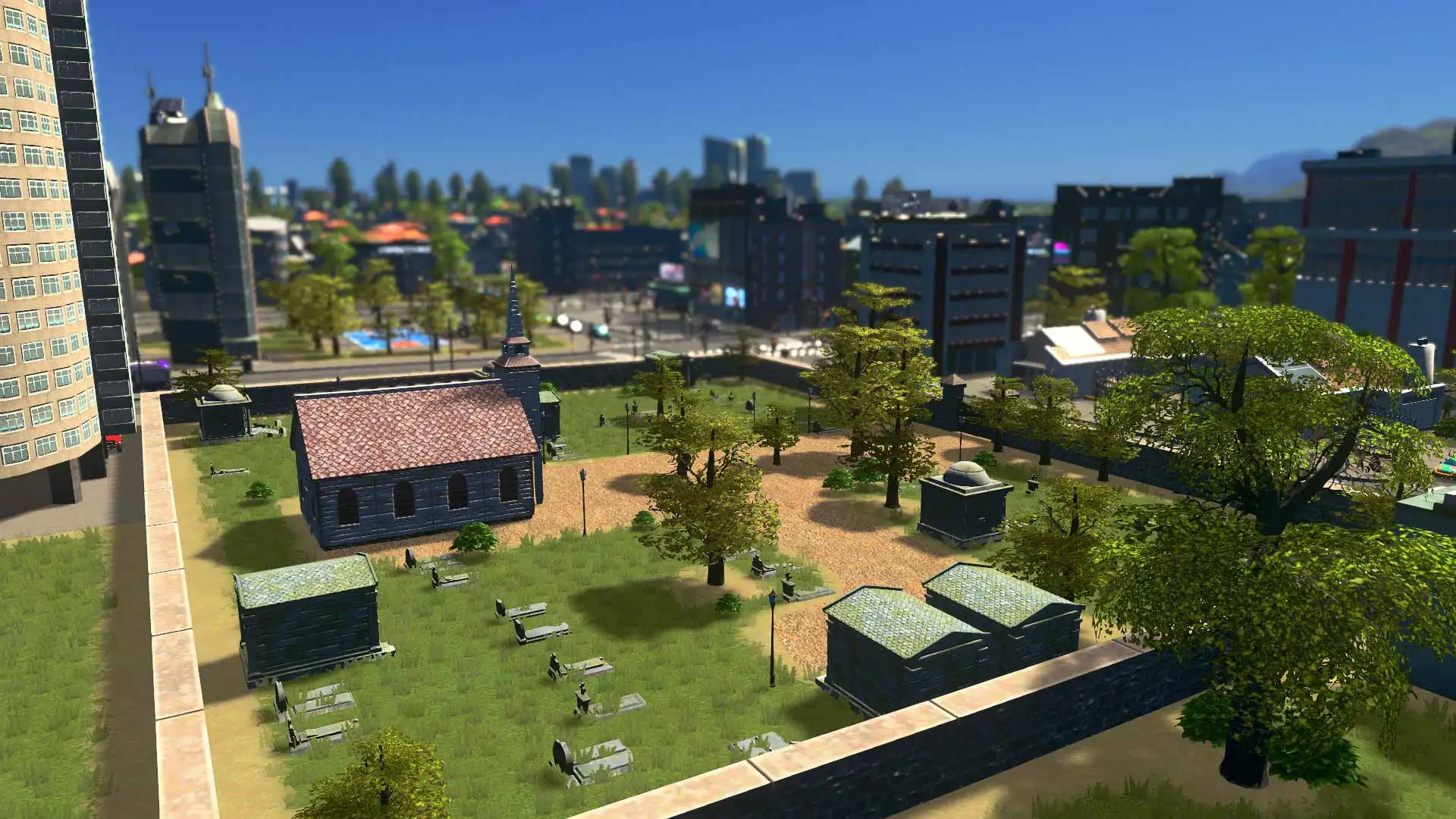
The basic city service buildings all increase local land value as well as delivering their service. Add a police station, cemetery or high school and you’ll see an immediate boost in the land value overlay.
The Yoga Garden and other health-benefiting buildings do the same. Even the Crematorium does.
Noise lowers value

Noisy buildings, even if they’re desirable, tend to lower land value around them. A train station in the middle of an otherwise green zone will drop a fairly significant blue hole in the middle of it.
Other noisy things: high-density commercial zones, busy roads including unwalled highways and many unique buildings do the same. Industrial areas are noisy, too, but there’s not much downside putting those far from homes.
That’s not true of train stations or some unique buildings which can greatly improve the city by being near homes. A main line within walking distance can drastically reduce traffic, for instance.
Trees got a rework with the free patch alongside Parklife. They now dampen noise. A well placed little forest significantly reduces the distance noise travels, letting you put buildings closer to homes.
Unique buildings
In general, unique buildings are a good thing for the city. But in terms of land value, they’re a mixed bag. Although they do create value for the area, that’s often outweighed by the noise they produce.
The noisiest buildings, like the Stadium, can have big consequences for their immediate vicinity. That’s why, if land value is important, it’s best to stick to the quietest uniques like plazas, or the Tax Office.
Better roads
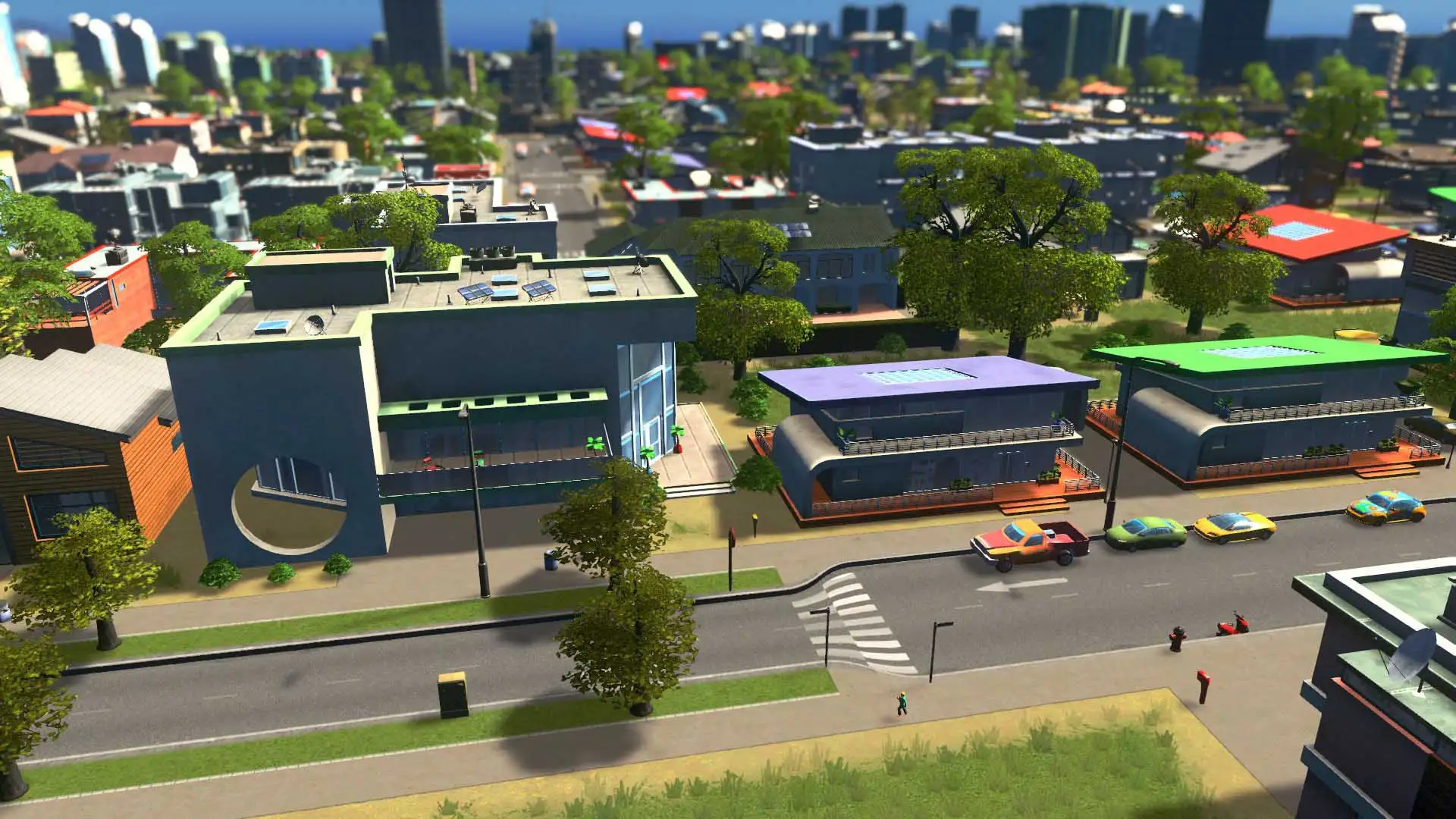
In one of the earlier patches, noise from roads was improved. It used to simply be a factor of road size: a six-lane road, even an empty one, would make a lot of noise. Now, regardless of the type of road, the volume and speed of traffic dictate the noise.
Tree-lined roads not only reduce noise reaching neighbouring buildings, it also pushes up land value a little. Upgrading your routes is, therefore, a simple and easy way to increase local prices. They do come at the cost of something else like cycle lanes, though.
City policies
A lot of city policies can indirectly improve land values. Banning cargo traffic in an area will reduce noise, for example. There are two policies that directly improve it, though.
Parks and Recreation increases land value around parks, plazas and sports facilities. The tooltip doesn’t suggest any downside. The policy doesn’t appear to increase weekly upkeep - so I’m not sure why you wouldn’t leave it on.
High Tech Housing is a bit clearer. It arrived with the Green Cities expansion and for a cost, all homes within the policy area increase land value around them.
Abandoned buildings
Just as a snowball effect can start when a building levels up, abandoned buildings can cause a wave of unhappiness. Because they lower local land value, they can contribute to tipping other buildings over the edge. Each building level has a specific land value requirement. If it drops below that, they’ll eventually get abandoned.
In that way, abandoned buildings can be both a symptom and a cause of other abandoned buildings.
Pollution
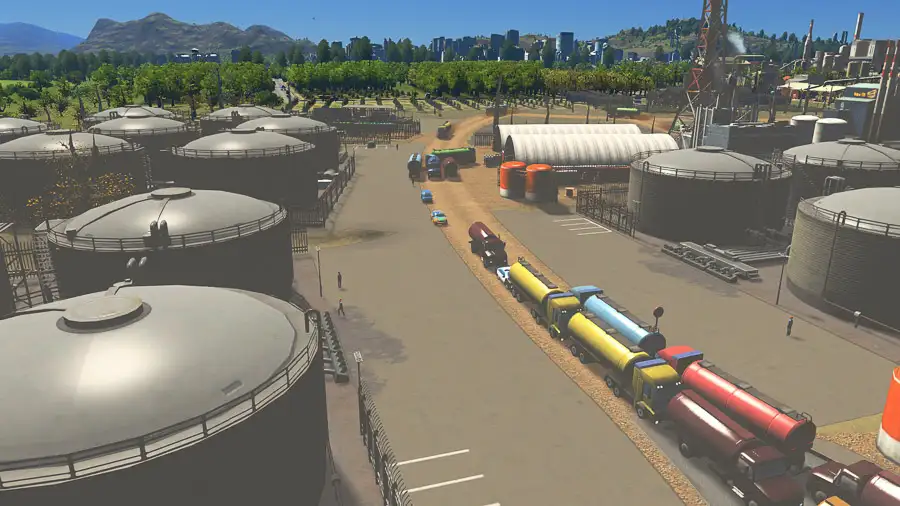
As well as making an area unlivable, pollution can quickly trash an area’s land value. Incinerators and industrial buildings pollute the ground underneath and around them. Coal and power plants do the same. Recycling plants do a better job but still leave traces.
Pollution isn’t permanent, though. Once you’ve removed the source, the pollution will slowly ebb away. Once it’s gone the ground will be fit for habitation again without poisoning the residents.
The Eden Project maxes everything
If you’ve unlocked and built all the prerequisite buildings the Eden Project becomes available. Once built, it essentially maxes out land value for the entire city. Every single square goes green, meaning you’ll not need to worry about land value anywhere.
For me, the monuments are generally overpowered and a bit weird, so I don’t use them. But the option is there! Eden Project kind of works in an Anno 2070-style futuristic city.
Roundup
There you go! I hope you found this useful. If I’ve missed anything, I’d love to know. Drop me a message.